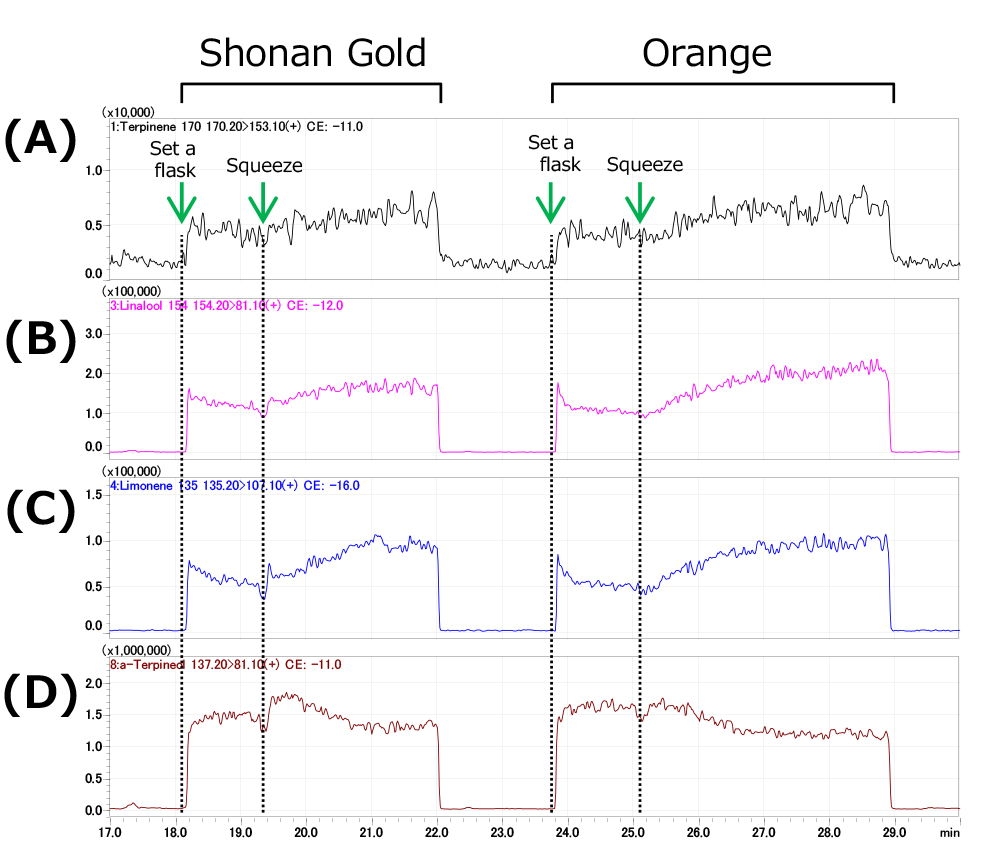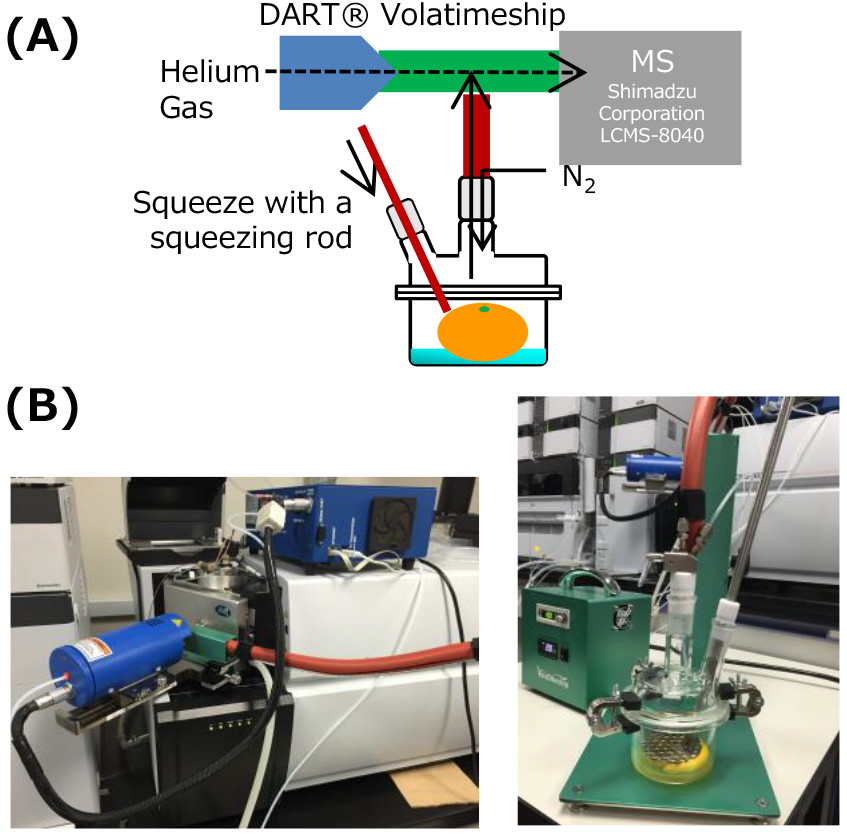Real Time Monitoring of Scent Release
Using Volatimeship ~Citrus~1)
Introduction
“Aroma” is one of the important sensory factors that contribute to the taste of foods and beverages. Gas chromatograph-mass spectrometry (GC/MS) has been conventionally used for analyzing fragrance from volatile compounds of foods and beverages. GC-MS is an excellent analytical technique that can analyze trace amounts of volatile compounds, but it is not suitable for measuring time-dependent change (flavor release) of volatile compounds in seconds.
The Direct Analysis in Real Time (DART®) ionization method is an ionization method which makes it possible to detect compounds in real time under atmospheric pressure. By using the volatile compound analysis device “Volatimeship“ together with DART®, volatile compounds can be guided efficiently to the mass spectrometer (MS), enabling a highly sensitive measurement Herein, we report the results of real time measurement of volatile compounds during squeezing citrus fruits by using a separable flask and a squeezing rod.
Samples
Orange “Shonan Gold”
Methods
The analysis system was composed of a DART® ion source and a mass spectrometer with a Volatimeship connected in between. (Shimadzu Corporation LCMS-8030) (Figure 1). A separable flask was selected due to the size of a sample. The sample was placed in a separable flask, and connected to the Volatimeship. The background was measured at first 1 min., and the entire sample was squeezed with a squeezing rod and the scent during squeezing was measured. The setting of MRM (Multiple Reaction Monitoring) is 170> 153 (precursor ion> product ion) for terpinene, 154> 81 for linalool, 135> 107 for limonene and 137> 81 for terpineol.
Results
The results of MRM of terpinene, linalool, limonene, terpineol were shown in figure 2. The volatile compounds from citrus fruits were detected in real time during squeezing. Also, the versatility of Volatimeship in adapting a device to accommodate the size and shape of a sample was confirmed.

Figure 2. Analysis results of
citrus scent (MRM)
(A) terpinene (B) linalool (C) limonene (D)terpineol
1) Sagawa, et al. :Development of a flavor release analysis method on volatile compounds of citrus fruits by DART®-MS ASMS2016 (June, 2016)

